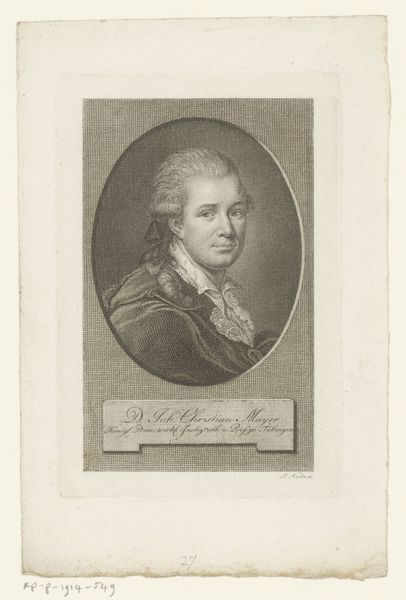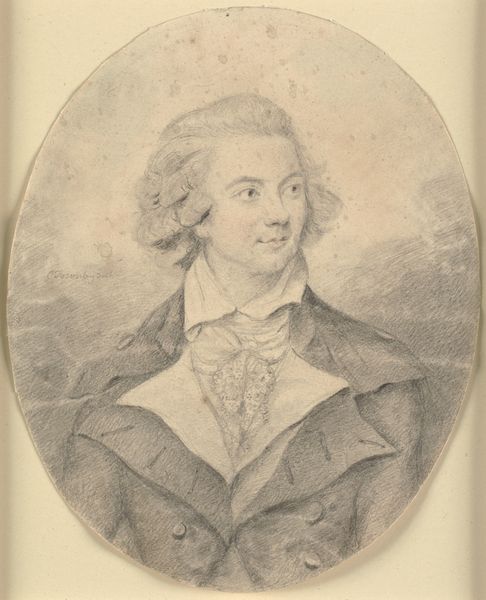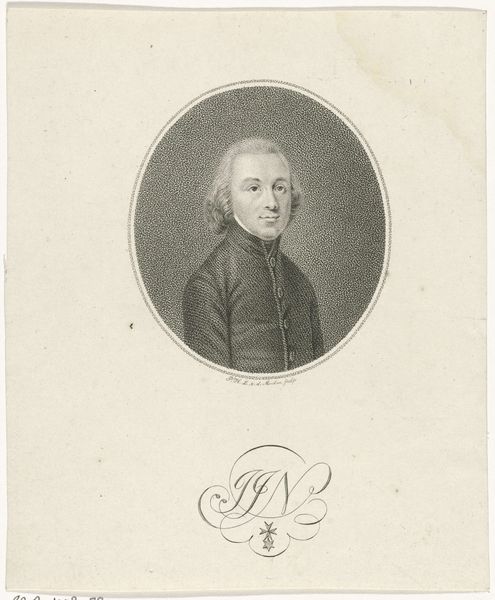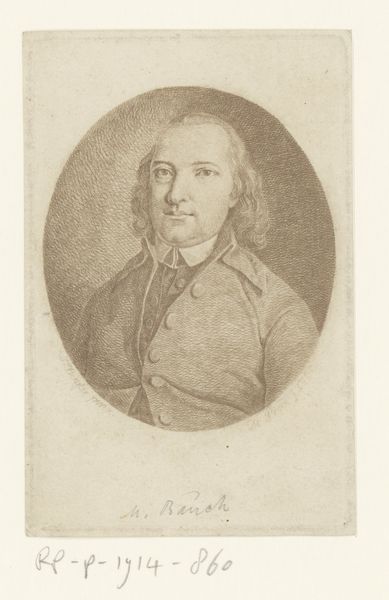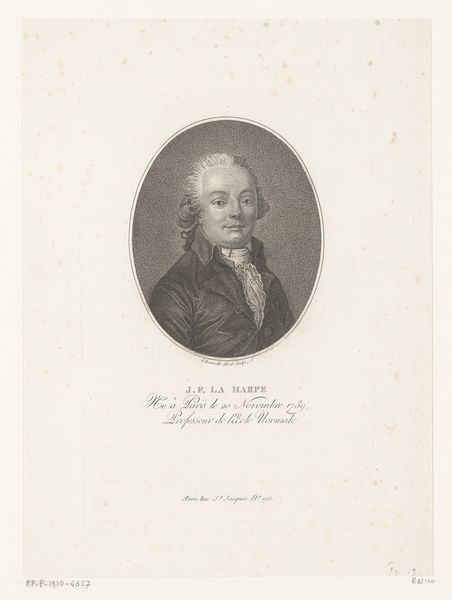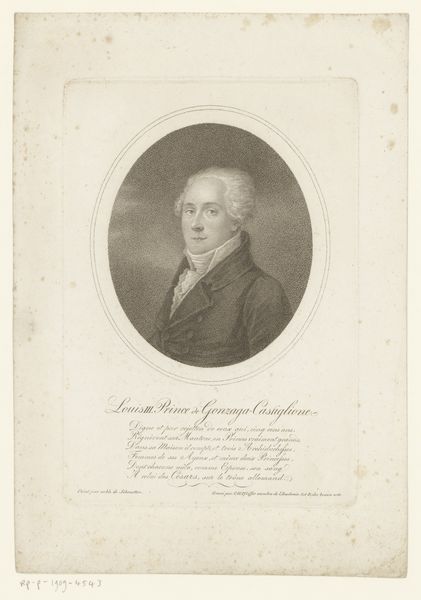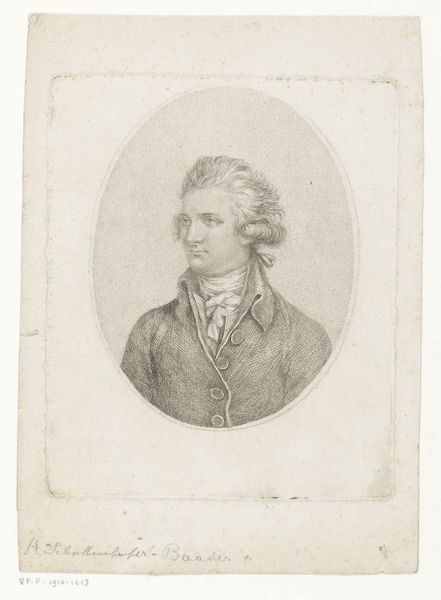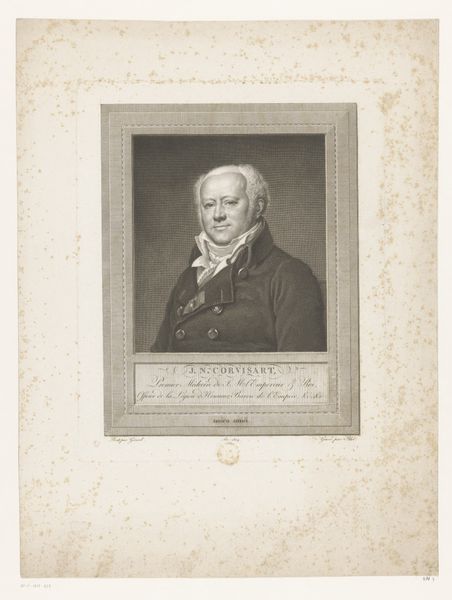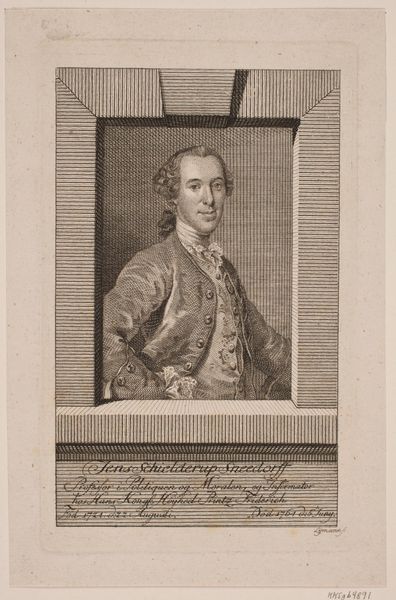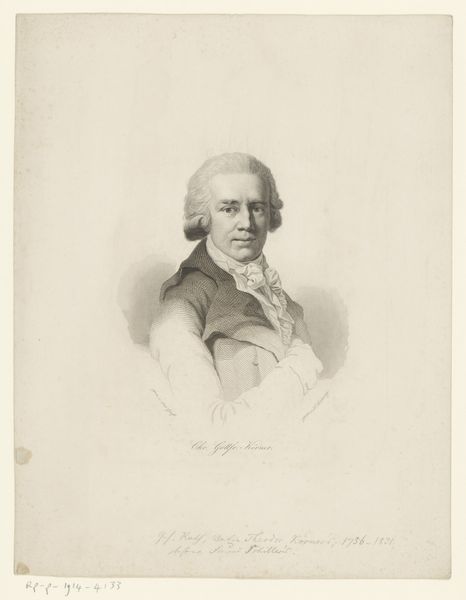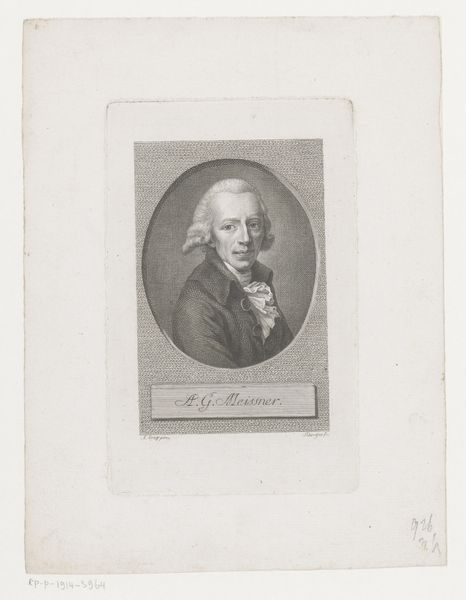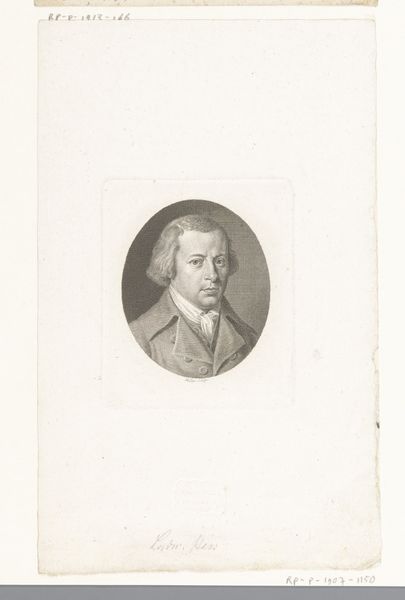
print, engraving
#
portrait
#
pencil drawn
#
neoclacissism
# print
#
pencil drawing
#
line
#
engraving
Dimensions: height 338 mm, width 255 mm
Copyright: Rijks Museum: Open Domain
This stipple engraving of Alois Reding von Biberegg was created by Balthasar Anton Dunker, and it’s a great example of how the medium of printmaking can reflect the social values of its time. Look closely, and you’ll notice the countless tiny dots that create the image. This painstaking technique, known as stipple engraving, allowed for delicate shading and tonal variations, mimicking the look of a chalk or pastel drawing. This was no quick process, but a labour intensive one, requiring skilled hands and specialized tools to achieve the desired effect. In its time, printmaking facilitated the spread of knowledge and ideas, and it also played a crucial role in shaping public perception. Portrait prints like this one were often commissioned by or for the sitter, as a way to project an image of respectability and status. The very act of creating a print— requiring a matrix, ink, and a press— speaks to a world increasingly defined by reproducibility and distribution. So, as you consider this image, think not only about the man depicted, but also about the labour and technology that brought his likeness into being. It reminds us that even seemingly simple images can be deeply embedded in the social and economic realities of their time.
Comments
No comments
Be the first to comment and join the conversation on the ultimate creative platform.

